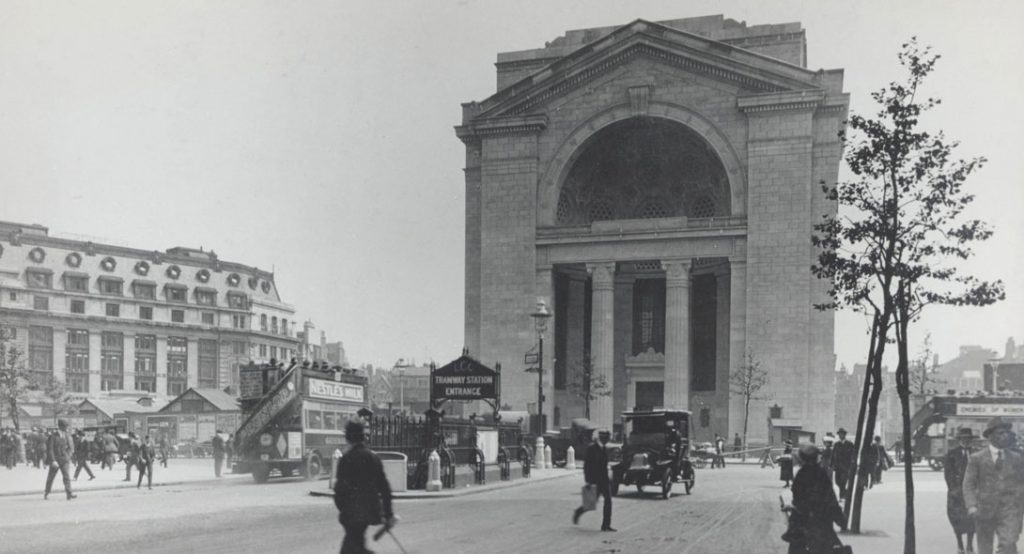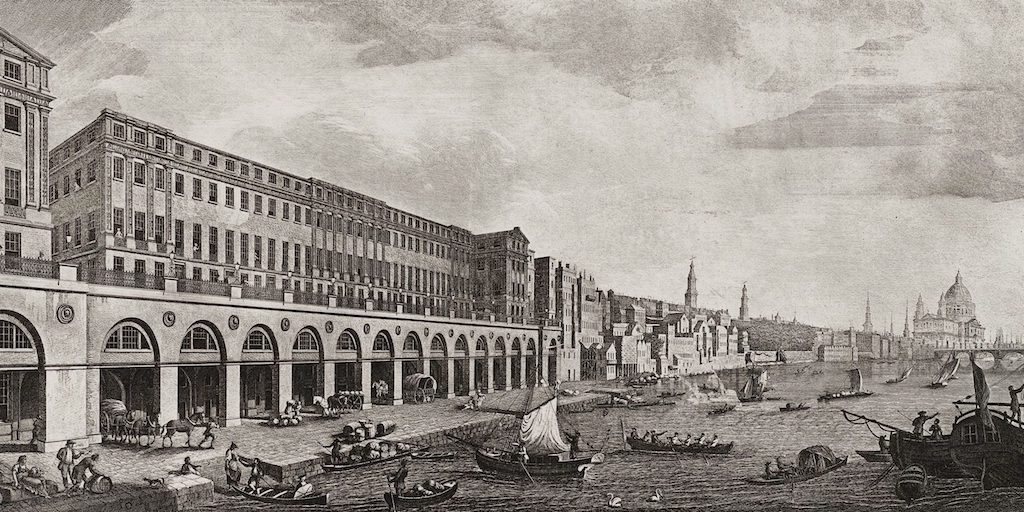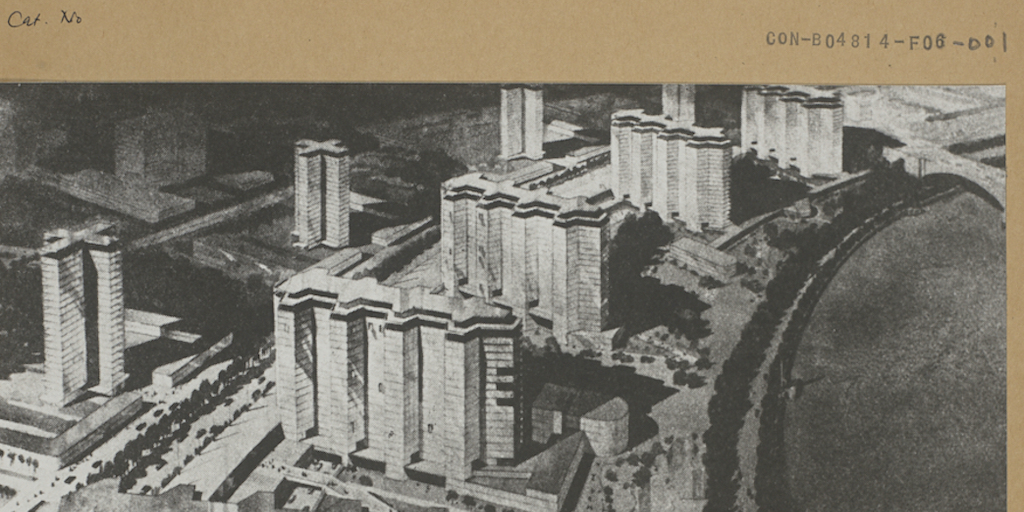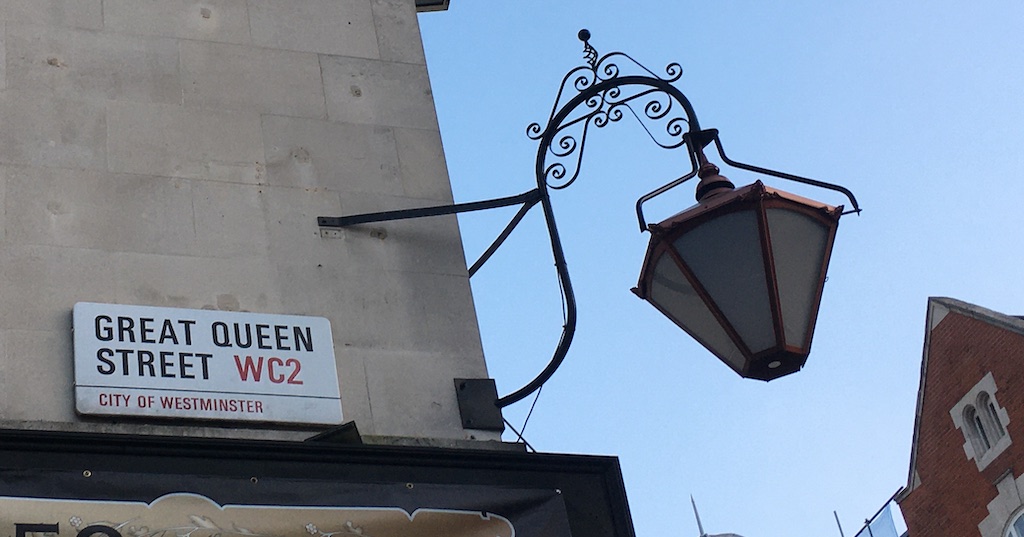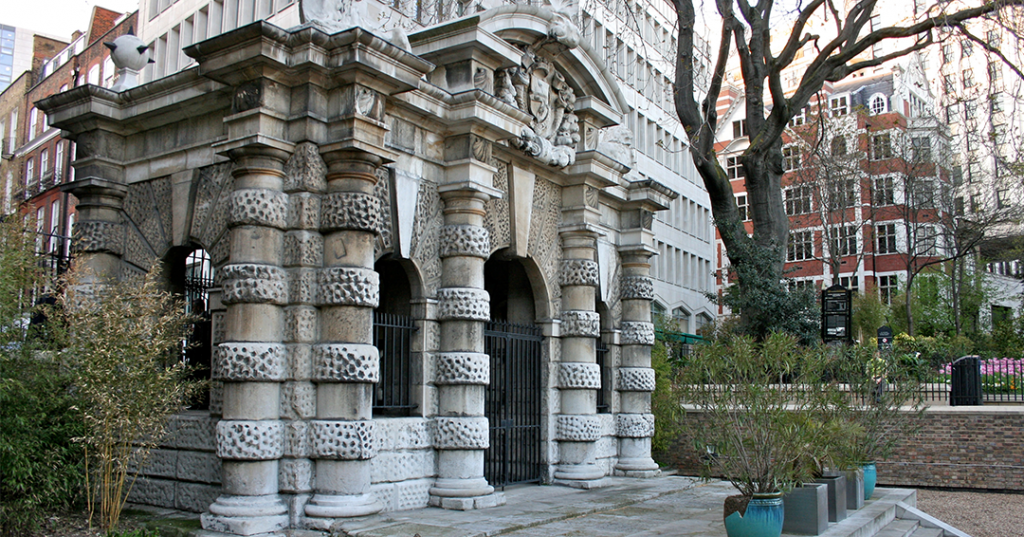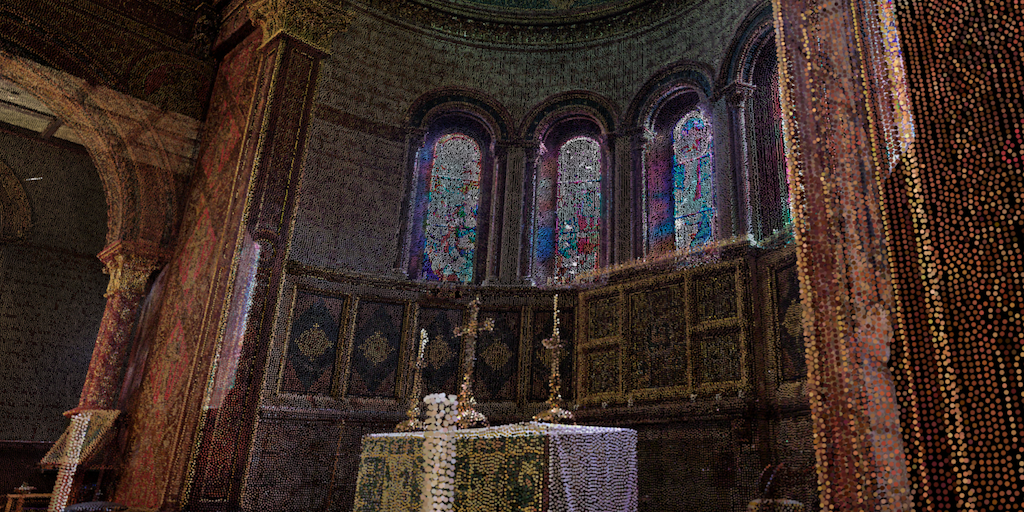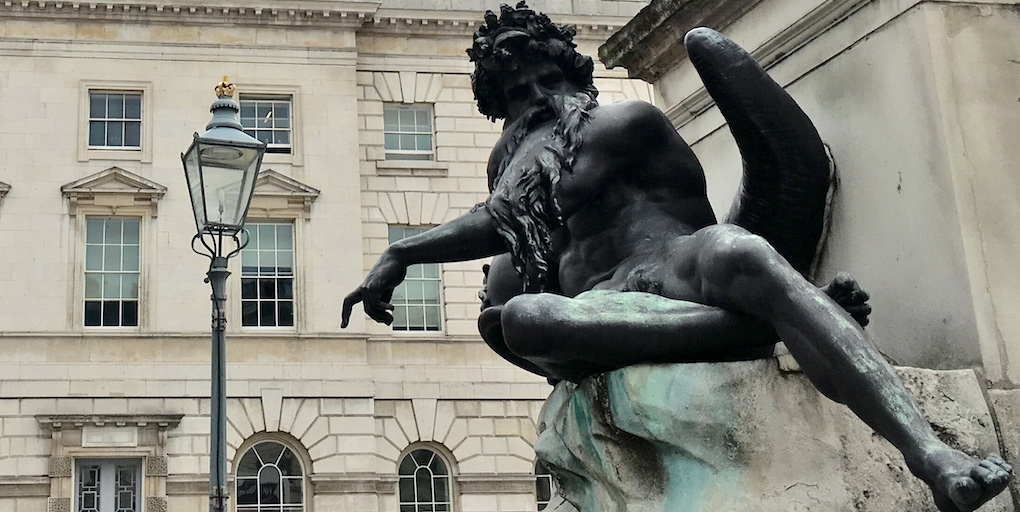Posts Tagged ‘design’
Building Bush House: Britain and America’s ‘Special Relationship’
Before Bush House was home to the BBC or, more recently, to King’s students, it was a personal project of one Irving T. Bush within his larger agenda of cementing America and Britain as pillars of international trade. Bush’s vision for an international trade centre was unlike the primarily electronic centres of exchange we might…
Read MoreThe Adelphi and Robert Adam
By the end of the eighteenth century, the Strand had become the theatre of one of London’s most adventurous architectural enterprises: the Adelphi. Four Scottish brothers Robert, John, James, and William Adam endeavored to transform a slum into a fashionable quarter, and in doing so, to promote their dream of social and artistic uniformity, equity,…
Read MorePeople of the Strand: Jonathan Sisson (1692 – 1749)
Jonathan Sisson established a scientific instrument making business at the corner of Beaufort Buildings in the Strand, London. The attic rooms included an observatory, the exterior visible in a drawing by the freemason, Thomas Sandby.[1] Sandby was the architect of the first Freemasons’ Hall on Great Queen Street, which was completed in 1766. For many…
Read MoreRepost from Courtauld Digital Media: Visions of London
Editors’ note: The Strandlines editors are always scouring for news and research about the Strand area. Below we’re delighted to be sharing an extract of ‘Visions of London’, a piece by Hannah Wilson, a Courtauld Connects Digitisation placement student. Thank you to the Courtauld Digitisation team for allowing us to share a snippet of Hannah’s…
Read MoreA short history of Great Queen Street
Laid out around the time of construction of Covent Garden and Lincoln’s Inn Fields, Great Queen Street, just to the North East of Covent Garden, was the third step of the quest for homogeneity that seventeenth-century London then wished to pursue. Following the same principles of houses already built in the Covent Garden area, brick…
Read MoreThe Eleanor (Charing) Cross
The story of the Eleanor Cross begins with the death of Eleanor of Castile, wife of Edward I, on 28th of November 1290. A series of twelve crosses marked the resting places of the funerary cortège which began in Nottingham, where Eleanor died, and made stops at towns between Lincoln and Westminster Abbey. Charing Cross…
Read MoreThe York Watergate
When the Duke of Buckingham ordered his York House (approximately located at present day 38 Strand) to be modernised in 1623, “it was customary for nobility to be conveyed by water” [1] while the less convenient carriages were preferred for state purposes. This made the building of private watergates by the river very common in…
Read MoreKing’s College London Chapel Preservation Project
At King’s College London Archives our remit is to preserve and provide access to the material in our care. This project is an experiment in how we might apply that philosophy to digitally preserve our physical objects and spaces. The buildings of King’s have a rich history and have changed much over the years. The…
Read MoreA Wind of Tingling Fullness on the Strand
A Wind of Tingling Fullness on the Strand: Sir William Chambers’ Sculptural Design and Somerset House as ‘the object of national splendor’ An Interview with Professor Michael Trapp, Department of Classics, King’s College London By Freya Zhang In her essay ‘The external sculptural decoration of Somerset House: And the documentary sources’, Susan Jenkins writes: “It…
Read More
